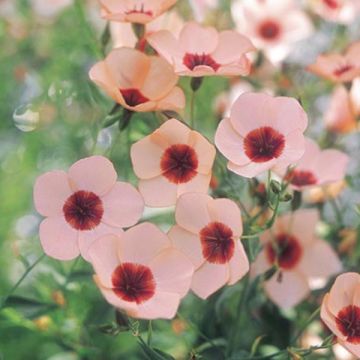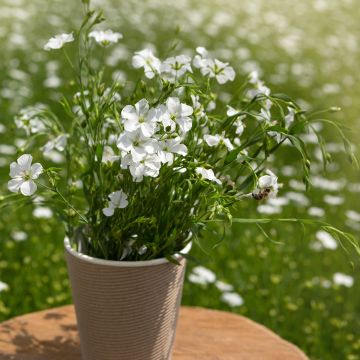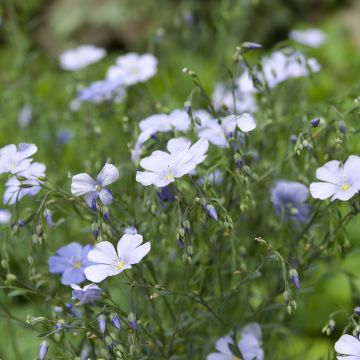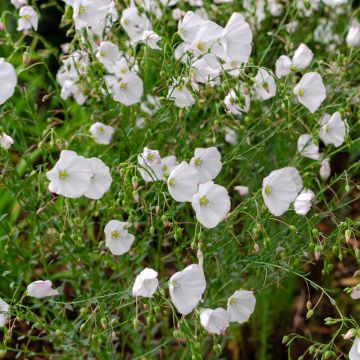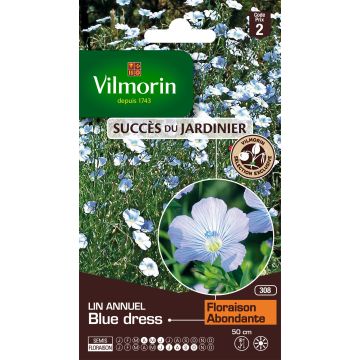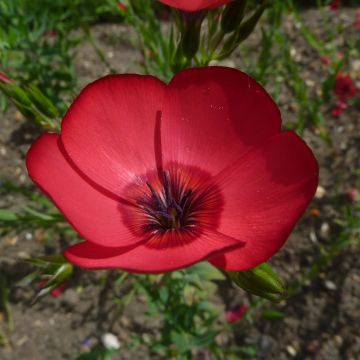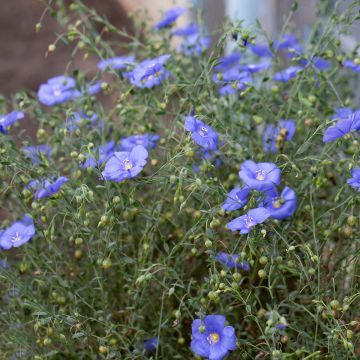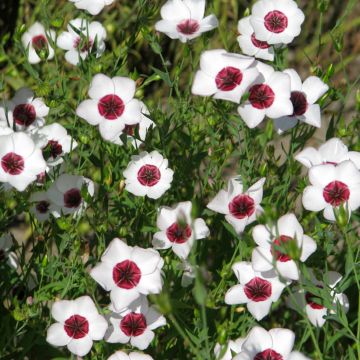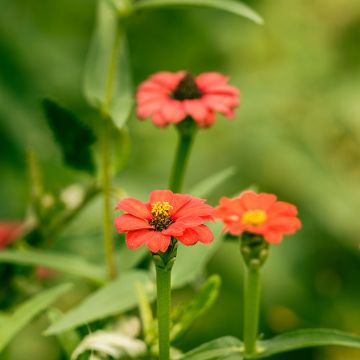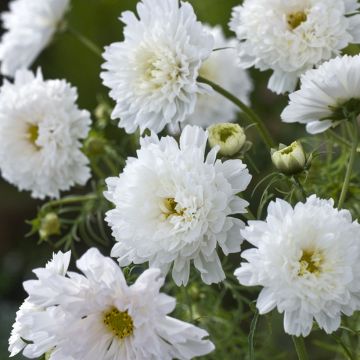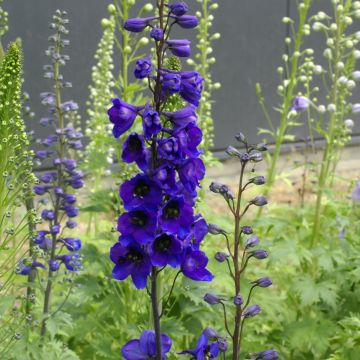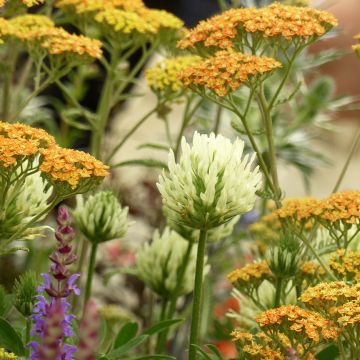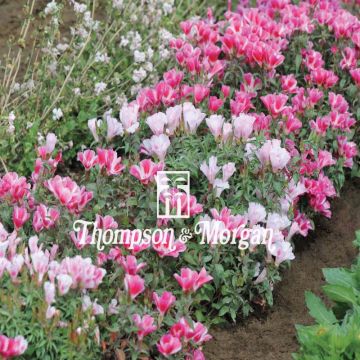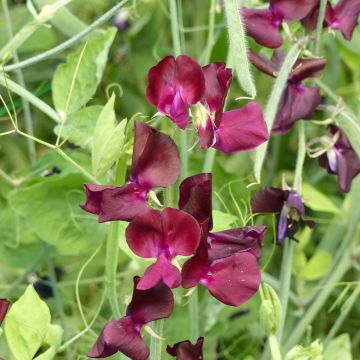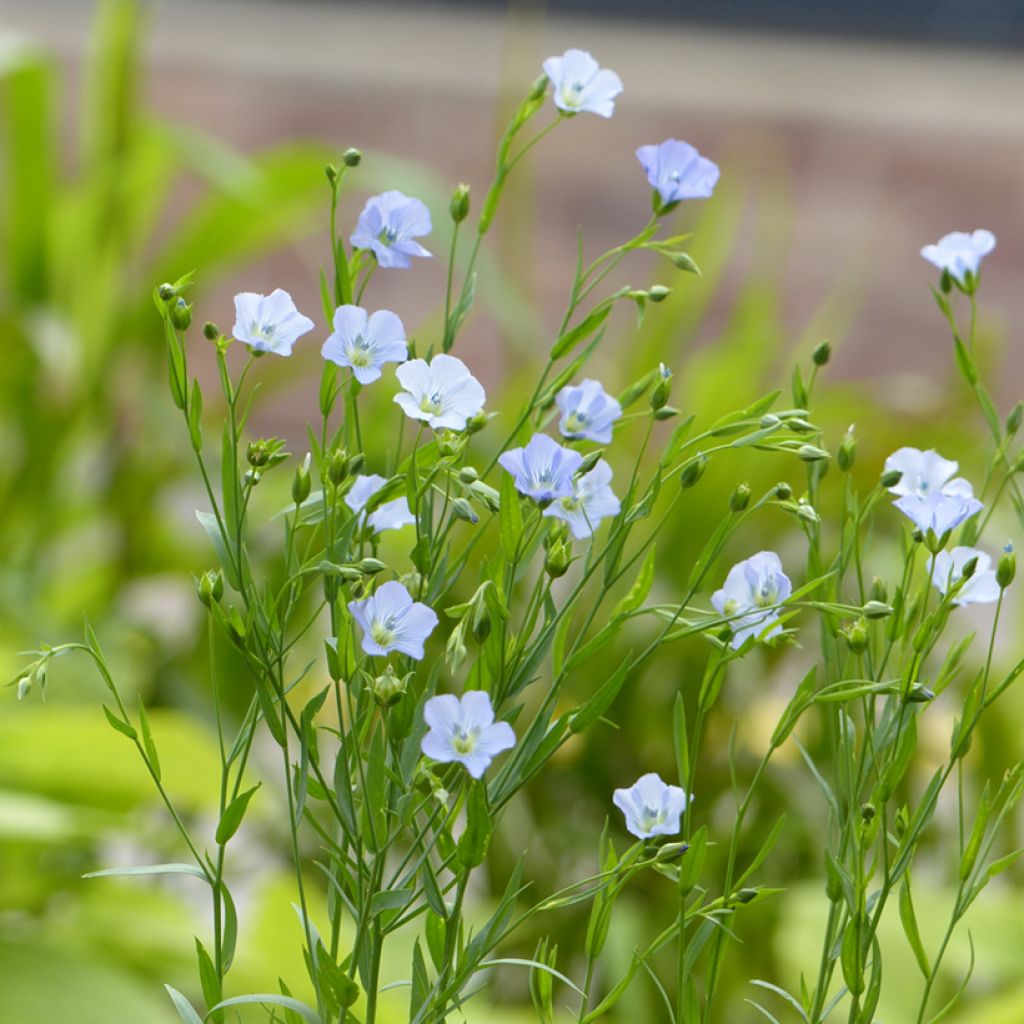

Flax Skyscraper seeds - Linum usitatissimum
Flax Skyscraper seeds - Linum usitatissimum
Linum usitatissimum Skyscraper
Common flax
Order in the next for dispatch today!
Dispatch by letter from €3.90.
Delivery charge from €5.90 Oversize package delivery charge from €6.90.
Current delivery delay: 1 day.
More information
This item is not available in your country.
Schedule delivery date,
and select date in basket
This plant carries a 6 months recovery warranty
More information
We guarantee the quality of our plants for a full growing cycle, and will replace at our expense any plant that fails to recover under normal climatic and planting conditions.
From €5.90 for pickup delivery and €6.90 for home delivery
Express home delivery from €8.90.
Does this plant fit my garden?
Set up your Plantfit profile →
Description
The Annual Flax 'Skyscraper' comes from the species Linum usitatissimum or Cultivated Flax. In addition to its ornamental aspect with its light and dancing azure blue flowers, it is an old variety from which one can obtain flax fibres and flax seeds. It is a textile flax that reaches approximately 90 cm in height, which is equally suitable for seed and oil production. Grow in a garden plot or mixed with perennials and annuals for its ornamental qualities. It can be sown directly in the ground, in well-drained, rich, and light soil.
Linum usitatissimum or Cultivated Flax is a hardy annual plant from the flax family. It is mainly found in temperate and subtropical regions of the northern hemisphere. Cultivated flax, Linum usitatissimum, is closely related to wild flax, Linum bienne. Morphological, genetic, and molecular studies indicate that Linum bienne is the wild ancestor of L. usitatissimum. Domestication has led to major modifications, such as the appearance of larger seeds richer in oil, as well as longer stems with a high proportion of long fibres. Flax fibres are used to make fabrics, ropes, or even construction materials due to their insulating properties. Linseed oil, extracted from its seeds, is rich in polyunsaturated fatty acids, including omega-3 and omega-6. It is used in cosmetics, pharmacy, and food.
The linseed's vegetative cycle allows it to germinate, grow, bloom, and reproduce before the arrival of intense heat in southern regions. In damper climates, it blooms all summer tirelessly. The 'Skyscraper' variety forms clumps with an upright habit in a few months, made of stems branching from the base, quickly reaching 90 cm in height and 40 to 50 cm in width. Its leaves are small, thin, lanceolate, with a bluish-green glaucous colour. The flat and round cup-shaped flowers measure 2 to 3 cm in diameter, formed by 5 sky-blue petals with a satin-like appearance, around a small yellow heart. Each flower lasts only a day, but they renew from early summer to autumn in moist soil. This plant readily self-seeds in light soils.
The Annual Flax 'Skyscraper' is a sun-loving plant that adapts to many climates. It should be sown directly in the ground, in a dedicated plot or in sunny beds and rockeries. Its ornamental qualities create rustic scenes or natural areas with Love-in-a-Mist, Toothpick Plant, Californian Poppies, among perennials or small bushes. Other companions include Linaria maroccana, baby's breath, or poppies. Its blue flowers are charming next to the red, pink, or white spikes of Red Valerian. This annual also complements the swaying foliage of grasses such as Fountain Grass, Stipa, or Muhlenbergia. It is placed in borders, planters, or even in a flowery meadow. Its lightness enhances the opulent flowers of Peonies and Roses, in the garden as well as in a vase.
Report an error about the product description
Flowering
Foliage
Plant habit
Safety measures
Botanical data
Linum
usitatissimum
Skyscraper
Linaceae
Common flax
Cultivar or hybrid
ingestion
Cette plante est toxique si elle est ingérée volontairement ou involontairement.
Ne la plantez pas là où de jeunes enfants peuvent évoluer, et lavez-vous les mains après l'avoir manipulée.
Pensez à conserver l'étiquette de la plante, à la photographier ou à noter son nom, afin de faciliter le travail des professionnels de santé.
Davantage d'informations sur https://plantes-risque.info
Other Common Flax seeds
Planting and care
Linum usitatissimum Skyscraper enjoys full sun. It is best sown directly in the ground. Sow anywhere in spring, or in late summer until early autumn in a dry climate. The young plants are quite hardy and will withstand the winter. Plant the seeds 3 cm deep, in furrows spaced 30 cm apart, prepared in well-loosened and worked soil beforehand, well weeded, as flax is not very competitive. Or sow by broadcasting. To achieve winter and early spring flowering, sow in late summer or early autumn and grow flax in pots in a cold greenhouse or conservatory. Water sparingly until the weather warms up. Thin out the sowing, keeping one young plant every 10 to 15 cm.
Cultivated flax prefers hot climates in summer and rather low rainfall. It thrives in deep, well-drained clay-loam soils. It does not appreciate moisture-retaining, waterlogged soils.
Sowing period
Intended location
This item has not been reviewed yet - be the first to leave a review about it.
Flower seeds
Haven't found what you were looking for?
Hardiness is the lowest winter temperature a plant can endure without suffering serious damage or even dying. However, hardiness is affected by location (a sheltered area, such as a patio), protection (winter cover) and soil type (hardiness is improved by well-drained soil).

Photo Sharing Terms & Conditions
In order to encourage gardeners to interact and share their experiences, Promesse de fleurs offers various media enabling content to be uploaded onto its Site - in particular via the ‘Photo sharing’ module.
The User agrees to refrain from:
- Posting any content that is illegal, prejudicial, insulting, racist, inciteful to hatred, revisionist, contrary to public decency, that infringes on privacy or on the privacy rights of third parties, in particular the publicity rights of persons and goods, intellectual property rights, or the right to privacy.
- Submitting content on behalf of a third party;
- Impersonate the identity of a third party and/or publish any personal information about a third party;
In general, the User undertakes to refrain from any unethical behaviour.
All Content (in particular text, comments, files, images, photos, videos, creative works, etc.), which may be subject to property or intellectual property rights, image or other private rights, shall remain the property of the User, subject to the limited rights granted by the terms of the licence granted by Promesse de fleurs as stated below. Users are at liberty to publish or not to publish such Content on the Site, notably via the ‘Photo Sharing’ facility, and accept that this Content shall be made public and freely accessible, notably on the Internet.
Users further acknowledge, undertake to have ,and guarantee that they hold all necessary rights and permissions to publish such material on the Site, in particular with regard to the legislation in force pertaining to any privacy, property, intellectual property, image, or contractual rights, or rights of any other nature. By publishing such Content on the Site, Users acknowledge accepting full liability as publishers of the Content within the meaning of the law, and grant Promesse de fleurs, free of charge, an inclusive, worldwide licence for the said Content for the entire duration of its publication, including all reproduction, representation, up/downloading, displaying, performing, transmission, and storage rights.
Users also grant permission for their name to be linked to the Content and accept that this link may not always be made available.
By engaging in posting material, Users consent to their Content becoming automatically accessible on the Internet, in particular on other sites and/or blogs and/or web pages of the Promesse de fleurs site, including in particular social pages and the Promesse de fleurs catalogue.
Users may secure the removal of entrusted content free of charge by issuing a simple request via our contact form.
The flowering period indicated on our website applies to countries and regions located in USDA zone 8 (France, the United Kingdom, Ireland, the Netherlands, etc.)
It will vary according to where you live:
- In zones 9 to 10 (Italy, Spain, Greece, etc.), flowering will occur about 2 to 4 weeks earlier.
- In zones 6 to 7 (Germany, Poland, Slovenia, and lower mountainous regions), flowering will be delayed by 2 to 3 weeks.
- In zone 5 (Central Europe, Scandinavia), blooming will be delayed by 3 to 5 weeks.
In temperate climates, pruning of spring-flowering shrubs (forsythia, spireas, etc.) should be done just after flowering.
Pruning of summer-flowering shrubs (Indian Lilac, Perovskia, etc.) can be done in winter or spring.
In cold regions as well as with frost-sensitive plants, avoid pruning too early when severe frosts may still occur.
The planting period indicated on our website applies to countries and regions located in USDA zone 8 (France, United Kingdom, Ireland, Netherlands).
It will vary according to where you live:
- In Mediterranean zones (Marseille, Madrid, Milan, etc.), autumn and winter are the best planting periods.
- In continental zones (Strasbourg, Munich, Vienna, etc.), delay planting by 2 to 3 weeks in spring and bring it forward by 2 to 4 weeks in autumn.
- In mountainous regions (the Alps, Pyrenees, Carpathians, etc.), it is best to plant in late spring (May-June) or late summer (August-September).
The harvesting period indicated on our website applies to countries and regions in USDA zone 8 (France, England, Ireland, the Netherlands).
In colder areas (Scandinavia, Poland, Austria...) fruit and vegetable harvests are likely to be delayed by 3-4 weeks.
In warmer areas (Italy, Spain, Greece, etc.), harvesting will probably take place earlier, depending on weather conditions.
The sowing periods indicated on our website apply to countries and regions within USDA Zone 8 (France, UK, Ireland, Netherlands).
In colder areas (Scandinavia, Poland, Austria...), delay any outdoor sowing by 3-4 weeks, or sow under glass.
In warmer climes (Italy, Spain, Greece, etc.), bring outdoor sowing forward by a few weeks.


































